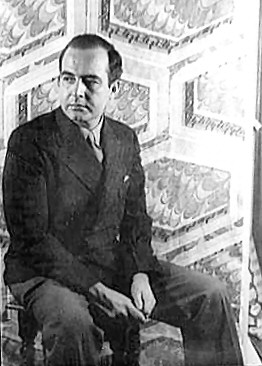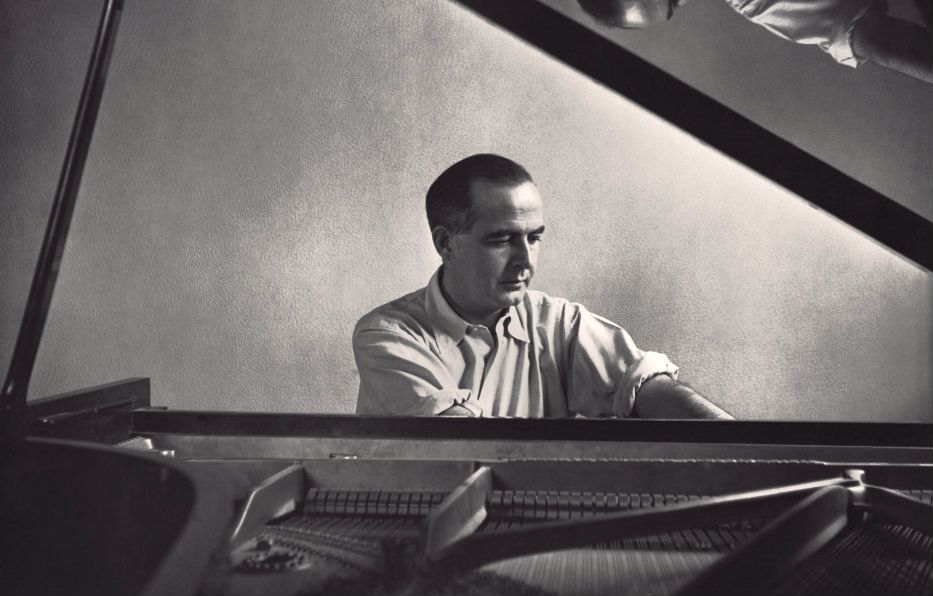Samuel Barber – A Complete Biography
Introduction
Samuel Osmond Barber II (March 9, 1910 – January 23, 1981) was a seminal American composer whose deeply lyrical and emotionally expressive music placed him among the most celebrated figures in 20th-century classical music. Adept across orchestral, operatic, choral, vocal, and piano realms, he favored romantic and tonal language over avant-garde experimentation, although he gradually embraced modernist elements later in his career.

Childhood
Born in West Chester, Pennsylvania, to Marguerite McLeod (née Beatty), a pianist, and Dr. Samuel Le Roy Barber, a respected physician, Samuel grew up in a culturally enriched, supportive family. His maternal aunt, contralto Louise Homer, and his composer-uncle Sidney Homer provided early musical influence and mentorship. Showing remarkable talent, Barber began piano lessons at age six, composed his first piece Sadness at seven, created the operetta The Rose Tree at ten, and became an organist at twelve.
Youth
At age 14, Barber entered the Curtis Institute of Music in Philadelphia, studying voice, piano, composition, and later conducting with distinguished teachers including Rosario Scalero and Fritz Reiner. While still a student, he won prestigious Bearns Prizes—for a now-lost violin sonata (1928) and his overture The School for Scandal (1931).
Barber’s early big breakthrough came with his Symphony in One Movement, premiered in Rome in 1936; it was the first American symphonic work presented at the Salzburg Festival in 1937. In 1938, Arturo Toscanini premiered Barber’s Adagio for Strings, which became not only his most famous work but an essential expression of American mourning and emotional depth.
Adulthood
Barber served in the U.S. Army Air Corps during World War II (1942–45), composing works such as the Second Symphony and Cello Concerto, and reviving his creative life in his retreat “Capricorn” with Gian Carlo Menotti.
Post-war, his Piano Sonata (1947–49), premiered by Vladimir Horowitz, cemented his place in American piano literature. He won the Pulitzer Prize twice: first for the opera Vanessa (premiered in 1958 at the Metropolitan Opera), then for the Piano Concerto (1962), which debuted at Lincoln Center’s opening. His later opera Antony and Cleopatra premiered in 1966 at the Met’s new building, but its critical failure deeply affected Barber.
Major Compositions
Barber’s oeuvre is rich and varied. Highlights include:
- Adagio for Strings (1936): Originally a string quartet movement, known for its emotional power and wide use in mourning contexts.
- Essay for Orchestra (1938): Premiered the same day as the Adagio, also conducted by Toscanini.
- Violin Concerto (1939), Cello Concerto (1945), Piano Sonata (1949), Capricorn Concerto (1944), Hermit Songs (1953), Knoxville: Summer of 1915 (1948), Agnus Dei (1967 adaptation of Adagio), and The Lovers (1971) show the breadth of Barber’s expressive range.
Death
Barber battled cancer in his later years, composing less frequently. His Third Essay (1978) and the choral Agnus Dei (1967) stand among his final significant works. Hospitalized intermittently from 1978, he died on January 23, 1981, in his New York City apartment. He was buried in West Chester’s Oaklands Cemetery, and his final work, Canzone for oboe and string orchestra, was published posthumously.
Conclusion
Samuel Barber’s music remains a testament to heartfelt lyricism and refined craftsmanship in American classical music. Despite shifts toward modernism, he stayed true to melodic and emotional expression, earning early and enduring acclaim. His legacy includes beloved masterpieces like Adagio for Strings, operas that challenged American traditions, and a profound corpus of vocal and instrumental works that continue to resonate with audiences today.

Comments are closed